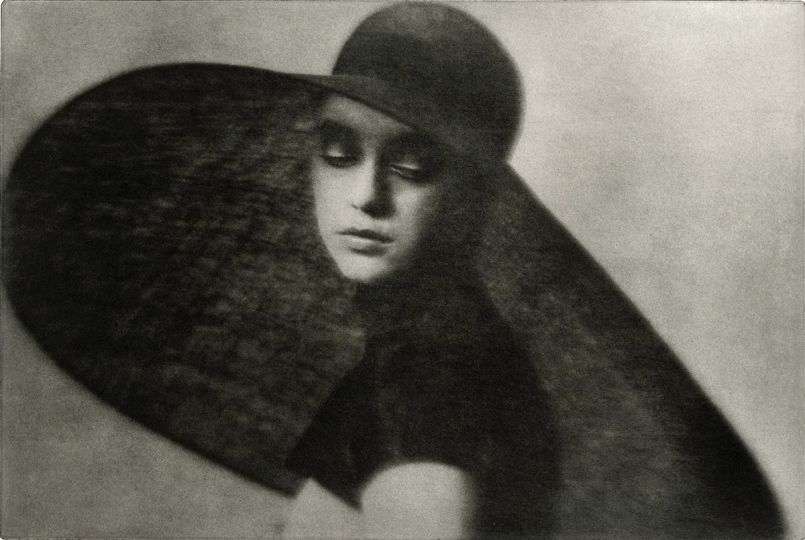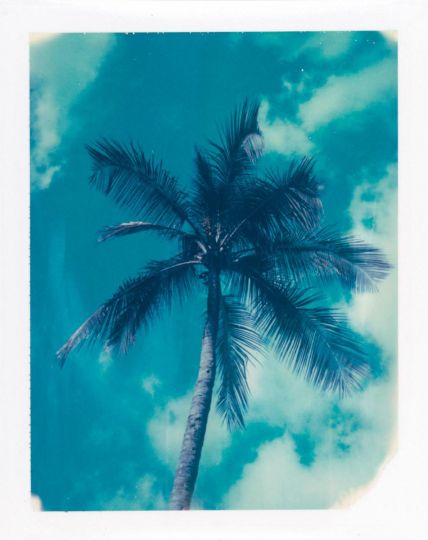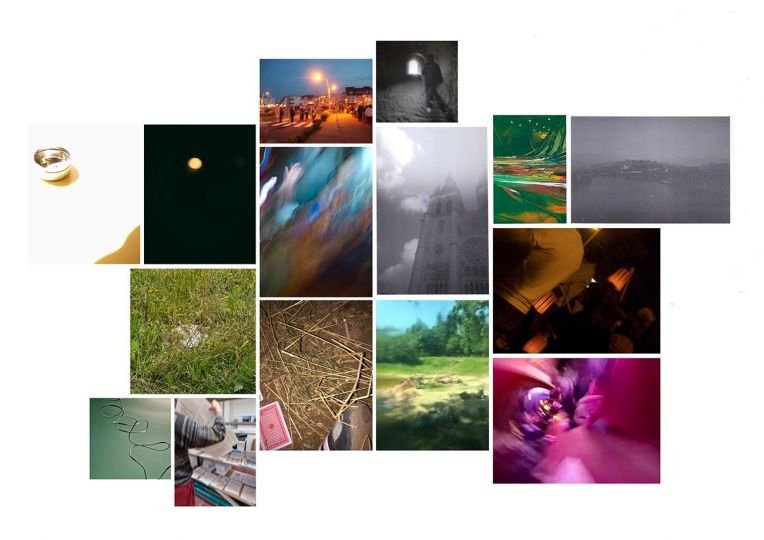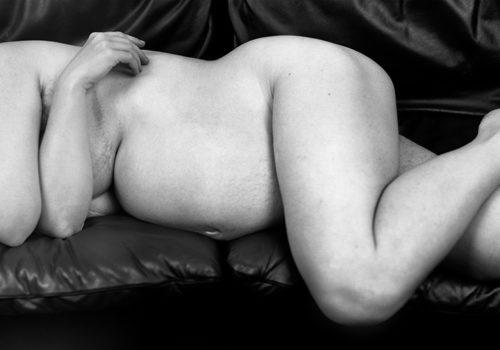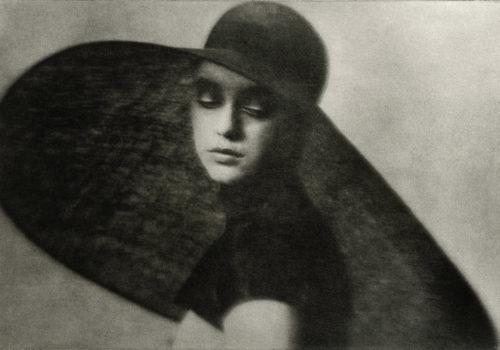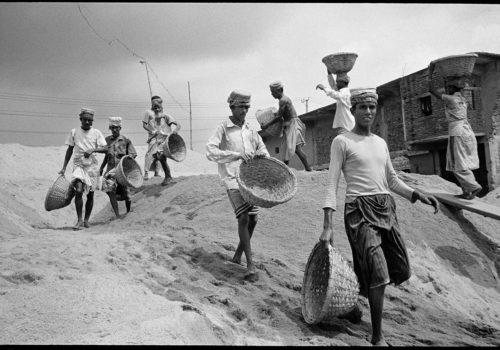After twenty years of working in the shadows, Michael Mack, founder of the eponymous publishing house three years ago, is experiencing a resounding success thanks to his audacious catalogue. He developed the character of his works while serving as an apprentice to the demanding Gerhard Steidl. The 46-year old from Britain is now betting on the finest and quality of his releases, and the risks he takes by publishing new talents while entering into deep dialogue with them. Of course, a few big names, like Paul Graham, are in his catalogue, but also, lesser-known like Christian Patterson, Antonio Xoubanova and William E. Jones have bright futures ahead of them, thanks in part to MACK. For this day devoted to the publishing house, Le Journal reached Michael Mack by phone. He spoke about how he started out, how he works with photographers, and his conception on how to design a book in paper and digital formats.
Could you tell us how your passion for books started?
M. Mack : I began with a strong interest in photography and started to work in a small gallery in London. I was terrible at selling prints; I curated a few small shows and did a few books. I realized at that point that photography ‘s relationship with the printed page was much more interesting that the one with the gallery. 20 years of experience has reinforced that opinion, I still believe that a photograph should not always find a space into a gallery wall. So I had the opportunity to make a few books at the beginning and realized that the book was what excited me the most. One was published by the Architecture Association in London and was about the relationship between photography and history in Germany; it was in the early 90’s, so Reconstructing Space: Architecture in Recent German Photography showed the work of Gursky, Struth and people like that. And another one was kind of a survey about contemporary photography.
How old were you at that time?
M. M : I was 25.
After this step, you started working for Gerhard Steidl, right?
M. M : Yes, absolutely. I got a very typical Gerhard phone call in which he just said: I’d like to come to London and meet you. At that time, I didn’t know who he was, he wasn’t a publisher of illustrated books yet; he was working as a publisher for Günter Grass as well as a printer for different entities. This was in 1994, he came and explained his Steidl projects and asked if I wanted to work with him.
What did you learn by working next to him during 25 years?
M. M : Everything I know has been learned working with him. The fundamentals being of course the quality of production; allowing an artist to have a voice, which is something, sometimes, other publishers make a mistake of not doing; having some confidence in the authors, allowing them to take decisions. And then, less interestingly but most importantly, I was working not only on the editorial level but also dealing with the business part. I learned everything about the distribution, the financial side of the production of books etc. It made me identify what was wrong with the system.
Do you work with the same frenetic rhythm than Gerhard Steidl?
M. M : No, not at all.
In 2010, you launched MACK, your own publishing company. Was it difficult at the beginning?
M. M : It was relatively easy actually, because I had the chance to start with this large experience. Also, I came with a big group of artists who wanted to work with me and had confidence in my work. These people, in addition to the team I had built, made it possible for me to find my way into the market. The work that I had done with Steidl and then SteidlMack, a branch that I created, had a particular taste, history, and lineage. I wanted to continue to a greater degree, get the freedom to refine that personal curation of a listed books.
What is a good book?
M. M : Very simply, a great book is something where the quality of the work and the quality of the ideas are sufficiently intelligent to be specifically applied to a book form. My biggest problem with most photography books is that they’re simply catalogues of images. They don’t necessarily need to exist as a book; in most cases it is vanity for the projects to end in a book. To me, the greatest books are the ones in which the relationship between the ideas, the images and the form are brought together to become a work in itself. When it becomes a distinct element of the artist’s practice. When the book is the piece.
Then it demands a close relationship with the artist, some talks, and some time…
M. M : Yes, and that’s one the reason I don’t work at that frenetic pace you were talking about. The pleasure is in the making, it’s not the selling or anything else. Those conversations, that engagement, are the most important thing. Art is about people.
A MACK book looks pretty polished and made with fine materials. Does it cost more money and time?
M. M : I don’t really know. Sometimes, projects are very slow to get finished. Simply because you can’t find the answers. This is something else I learned from Gerhard. Sometimes the book is just not ready. But at the same time, we very often have projects that can be made very quickly. It has a lot to do with the needs of the particular project and the urgency of the artist. We try to be adaptable and human, in the sense that we don’t have rules. We want to be responsive, be able to do something very quickly or sometimes take two years. It’s a pleasure in both cases.
One of the particularities of MACK books is that lots of them don’t show any picture on the cover; adding some kind of mystery and maybe pleasure to discover the book, open the first page. When do you decide to put a photograph or illustration and when do you decide to leave it blank?
M. M : People recently think that this kind of a home style, having only graphics or text on the cover. I have to say it just so happens if it’s the case. And it’s interesting because at the moment there’s kind of a reaction against that with some artists, who actually want images all the way around, front and back. We don’t try to push them in that direction, we try to make something that they’re happy with. It depends if the design suits the project, if the artist, the designer and me think it’s good or not.
Until now, which books did you prefer to work on?
M. M : To be honest, it is always the last one I did. Right now, the one made with the sculptor Martin Boyce. The result is a wonderfully complete and independent piece.
Antonio Xoubanova, a Spanish photographer who worked on a book with you said he was contacted by email after you saw his project online on his website. Is this one way you discover artists?
M. M : Actually, it’s someone who works with me who knew his work and referred me to his website. And then we just contacted him and offered him to send a dummy version. And it’s actually very close to the final book that we made. He had a really clear idea of what he wanted to make and that impressed me. It’s a rarity, I guess about five projects have become books that way.
As an example, could you tell us in details how you worked with him?
M. M : Yes, sure. After he sent the dummy, I invited him to come to London and bring a lot more images. We just started by spending a few days looking at pictures, talking about the structure, criticizing it, making some suggestions, starting a new design file. He then went back to Madrid and we supplied him with a pdf file of what we had achieved together. He would come back and criticize that version and we would meet regularly. For Antonio, we had Paris Photo 2012 as a deadline and we got it ready for the event. And the good thing is that every person of our small team was involved in the process.
Your catalogue is, in a way, a precise selection and show a certain taste for a type of work. How do you select the artists you work with?
M. M : The reality is that it would be very easy for me only to publish established and famous photographers, who have big shows in museums or galleries. Some of them are actually willing to work with us and there’s room for them to, like Paul Graham or Rineke Dijkstra. But perhaps what’s more exciting is working with emerging people. People who were never published before or young in their artistic careers.
You’re kind of the older brother of young photographers?
M. M : (Laughs) I don’t know if I would say that. For the last two years, we worked on an award with the National Museum called the First Book Award. It is absolutely the most vibrant part of what we do. We have submissions through nominations from across the globe. We insist people make a dummy, which is very easy now with all these software platforms. The variety and the quality are stunning. It gives me great faith both in the vibrancy of the medium in the hands of young practitioners, and also in the capacities regarding the book. In the last five years, the photo book has regain interest because photographers now automatically think it’s a way to get their work published. You see very sophisticated things at a very young age.
Are you only interested in contemporary photography?
M. M : Perhaps this is a reflection of my thinking. This week I had two meetings about potentially making books with 19th century works. And the reason these curators came to me is that they want something not traditional, new ideas added to the photos. I don’t say I can improve the treatment significantly but it’s exciting to try. So yes, I can be interested in any type of photography.
You embrace as well modern technologies by proposing digital books in a structure called MAPP. What’s the ultimate goal of MAPP?
M. M : I supposed it’s obvious that the future of reading is through screens. The reality is that I feel I will always make paper books but my job is to consider audiences. Young and old , and all over the world.
Is it different to conceive a digital book compared to a hard copy?
M. M : Yes, it is. Our perception changed over time actually. We were thinking we would only make apps for androids, ios, tablets but now we’re looking for open source basis of html 5, which is more capable of being adapted to the numerous platforms. We’re often working on projects on both platforms, physical books and digital.
Is MAPP doing well financially so far?
M. M : Yes, it’s doing absolutely fine. But it’s a long-term business. It’s a different approach to 99% of the people in the market place right now.
What do you think of selling platform such as Amazon?
M. M : Such websites are in the middle of the problem of the broken market. Amazon would take your books and instantly apply a discount on it. Which is a problem, of course, for small bookshops. It’s their policy and it has absolutely destroyed the illustrated book market. So we try to work on the edges of Amazon. But the answer to that phenomenon is that you see the emergence of small-specialized publishers, like us, who try to provide a specific type of products, who still have an interest. We build our audience with other technologies such as social medias.
Is there any project you haven’t seen yet, you would like to arrive on your desk and curate in a book?
M. M : I’m constantly amazed by the things that are brought to me. All I’m hoping for is that perfect combination of image making and great concept. Lots of artists I’m working with understand the medium very well and do sometimes our job themselves. I feel very fortunate.
Interview by Jonas Cuénin


